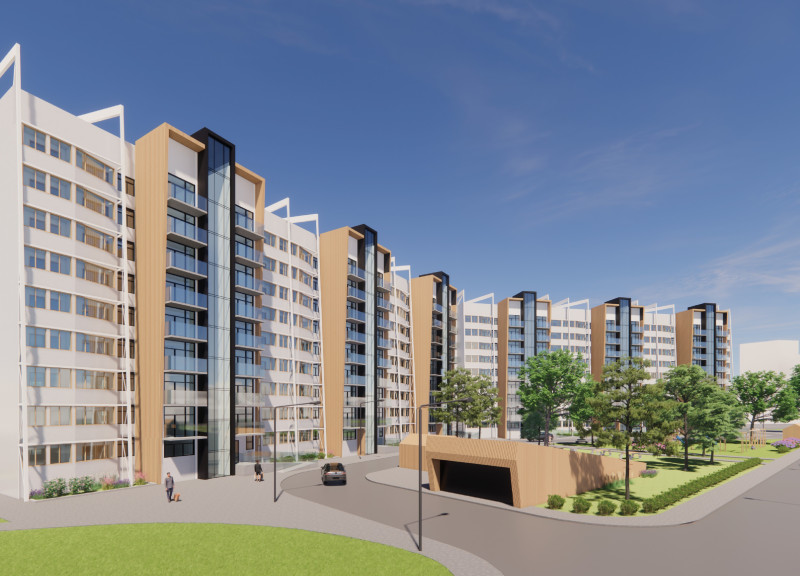5 key facts about this project
At its core, the project serves multiple functions, catering to the needs of its occupants while also engaging with the broader community. The design integrates residential units with common areas that foster interaction among residents, creating a sense of community and belonging. Such intention is evident in the layout of the ground floor, where open spaces encourage gatherings and socialization while maintaining privacy for the living areas above. This thoughtful organization reflects an understanding of how spaces can promote connection while respecting individual needs.
The architectural details are meticulously crafted. The facade features a blend of materials, combining elements such as textured concrete and expansive glass panels that allow natural light to permeate the interior spaces. This choice of materials not only enhances the building's aesthetic appeal but also contributes to energy efficiency. The glazing selections reduce heat gain while offering stunning views of the surrounding landscape, connecting the interiors with the external environment seamlessly.
One of the unique design approaches employed in this project is the integration of green solutions. The architects have thoughtfully incorporated landscaping elements that include rooftop gardens and vertical greenery on the facade, which promote biodiversity and improve air quality. These elements also serve to enhance the building's visual impact, breaking up hard surfaces with organic forms that soften the overall appearance of the structure.
From an architectural standpoint, the project's volumetric composition is striking in its simplicity yet profound in its execution. The various levels are articulated through setbacks and cantilevers, creating dynamic perspectives from different viewpoints around the site. This design strategy ensures that the building is not merely a monolithic form but rather a coordinated series of interrelated spaces that invite exploration and interaction.
Attention to detail is evident in the interior design, where the choice of finishes reflects contemporary trends while catering to practicality. The use of durable materials within the common areas, such as polished concrete and sustainably sourced wood, speaks to a commitment to longevity and ease of maintenance. In residential units, the layout maximizes space efficiency without compromising comfort. Open-concept layouts, paired with tasteful design elements like integrated storage solutions, highlight a functional approach to living that is both modern and welcoming.
In summary, this architectural project encapsulates the essence of contemporary design — marrying functionality with an acute awareness of context. The incorporation of sustainable practices, community-focused spaces, and a harmonious material palette makes this project a noteworthy example of modern architecture. For a deeper understanding of the architectural intent, readers are encouraged to explore the project's presentation, including architectural plans, architectural sections, and architectural designs, which provide valuable insights into the underlying ideas that shaped this remarkable endeavor.


 Kateryna Lokhnina
Kateryna Lokhnina 























